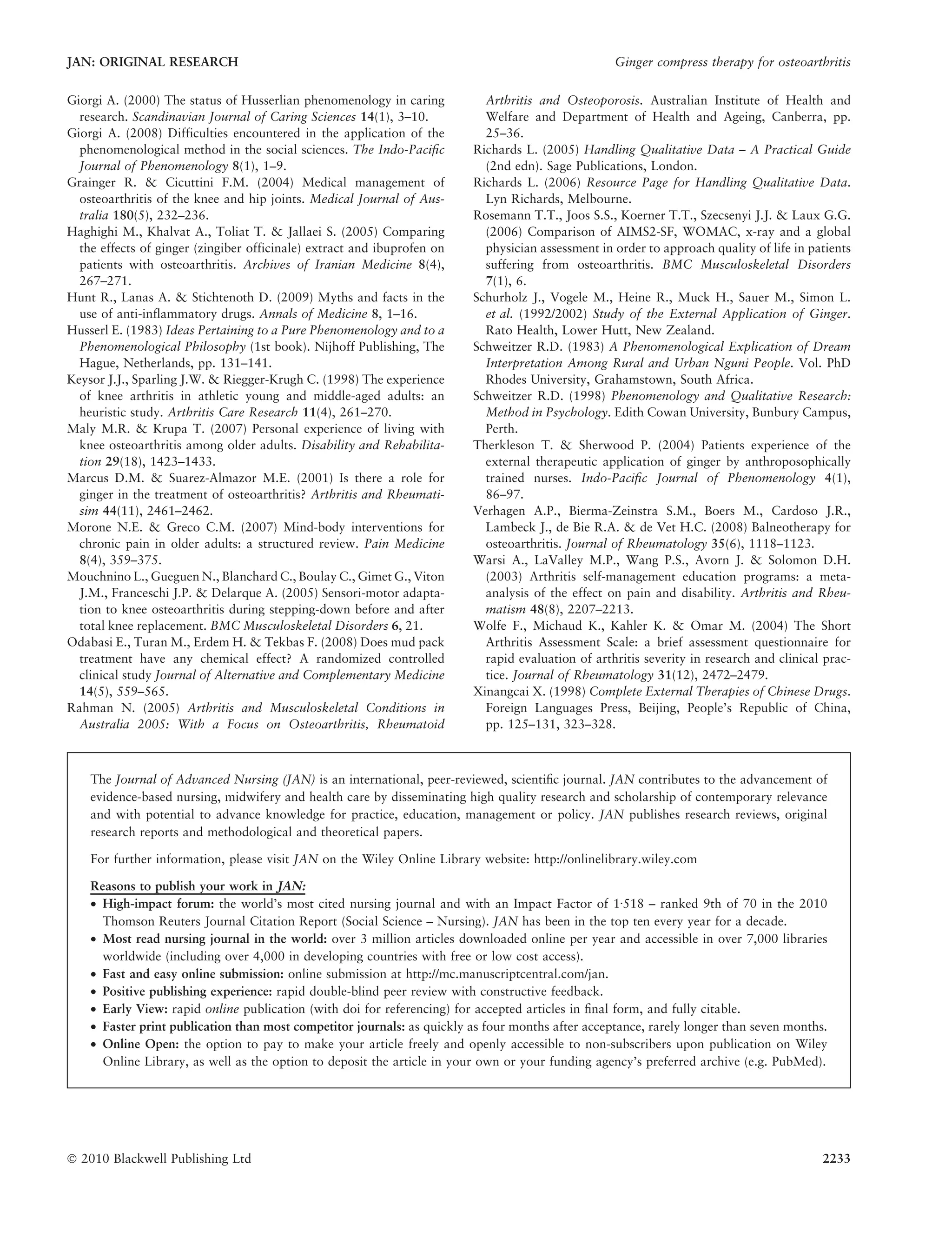Ginger compress therapy was studied to understand its effects on people with osteoarthritis. 10 participants received daily ginger compresses for a week. The compresses created:
1) A meditative state of relaxation and stillness of thoughts, allowing positive reconsideration of life's challenges.
2) A feeling of constant, penetrating warmth that spread throughout the body and increased relaxation.
3) A positive change in outlook, with past memories viewed with fresh insight and acceptance, renewing interest in the world.
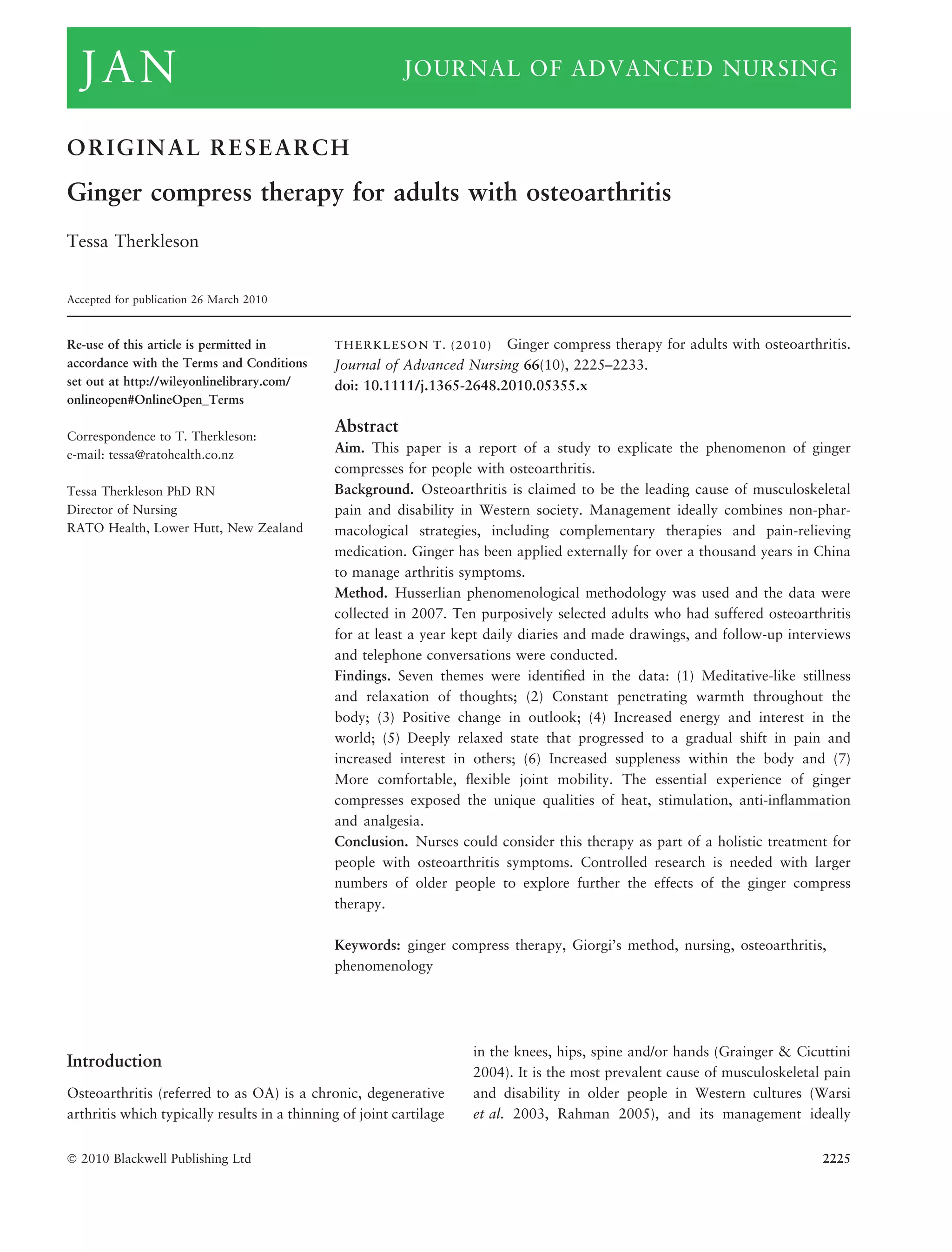
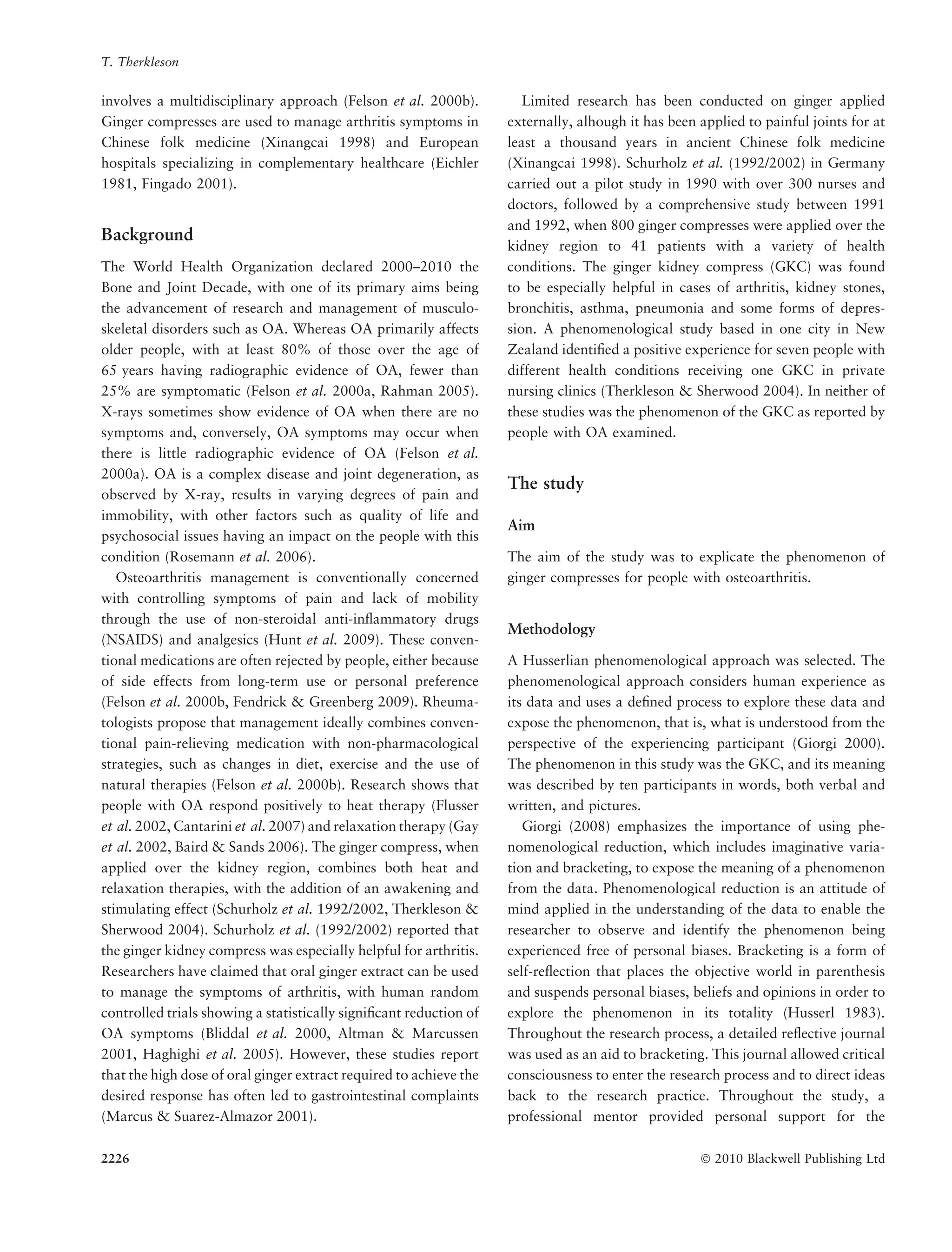
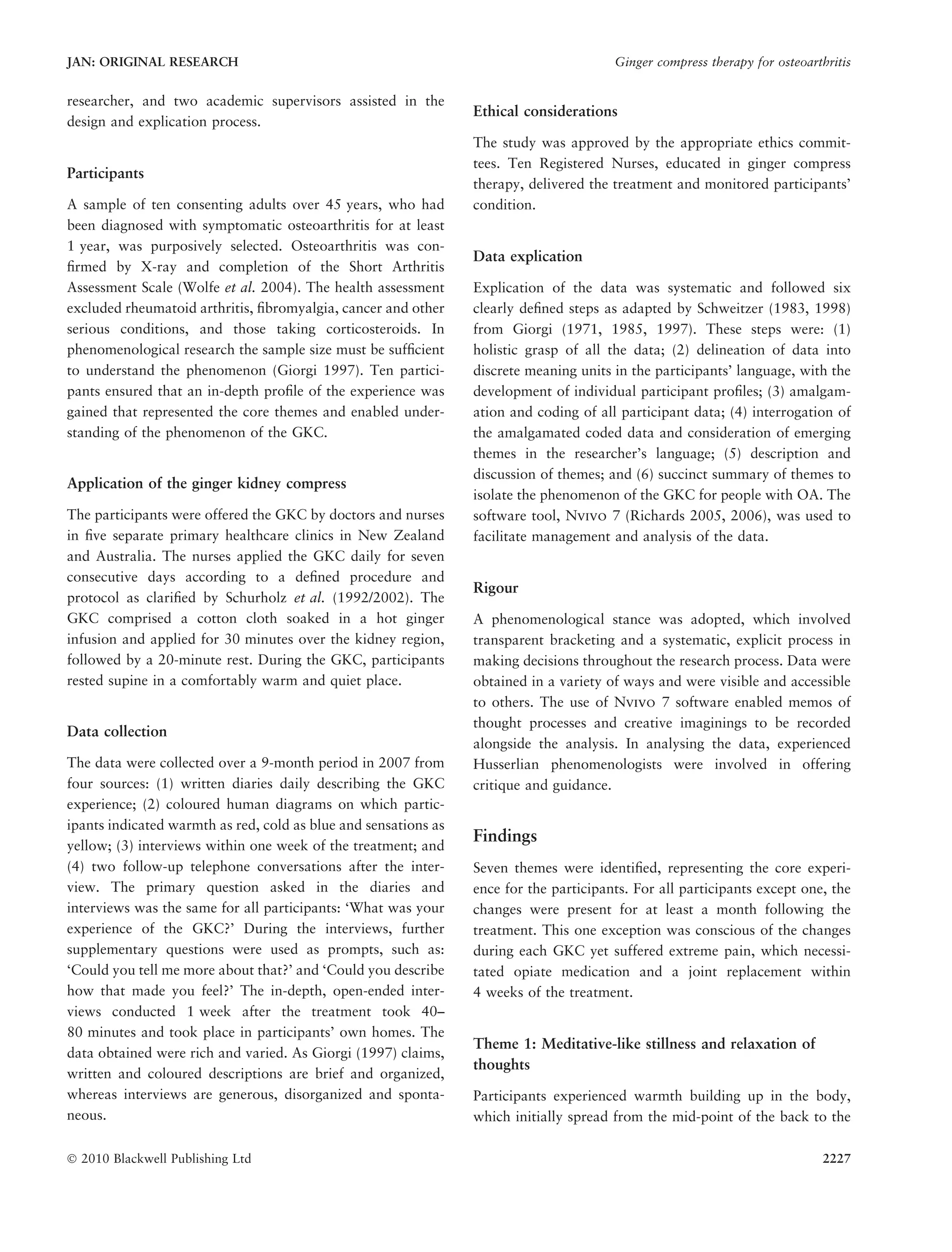
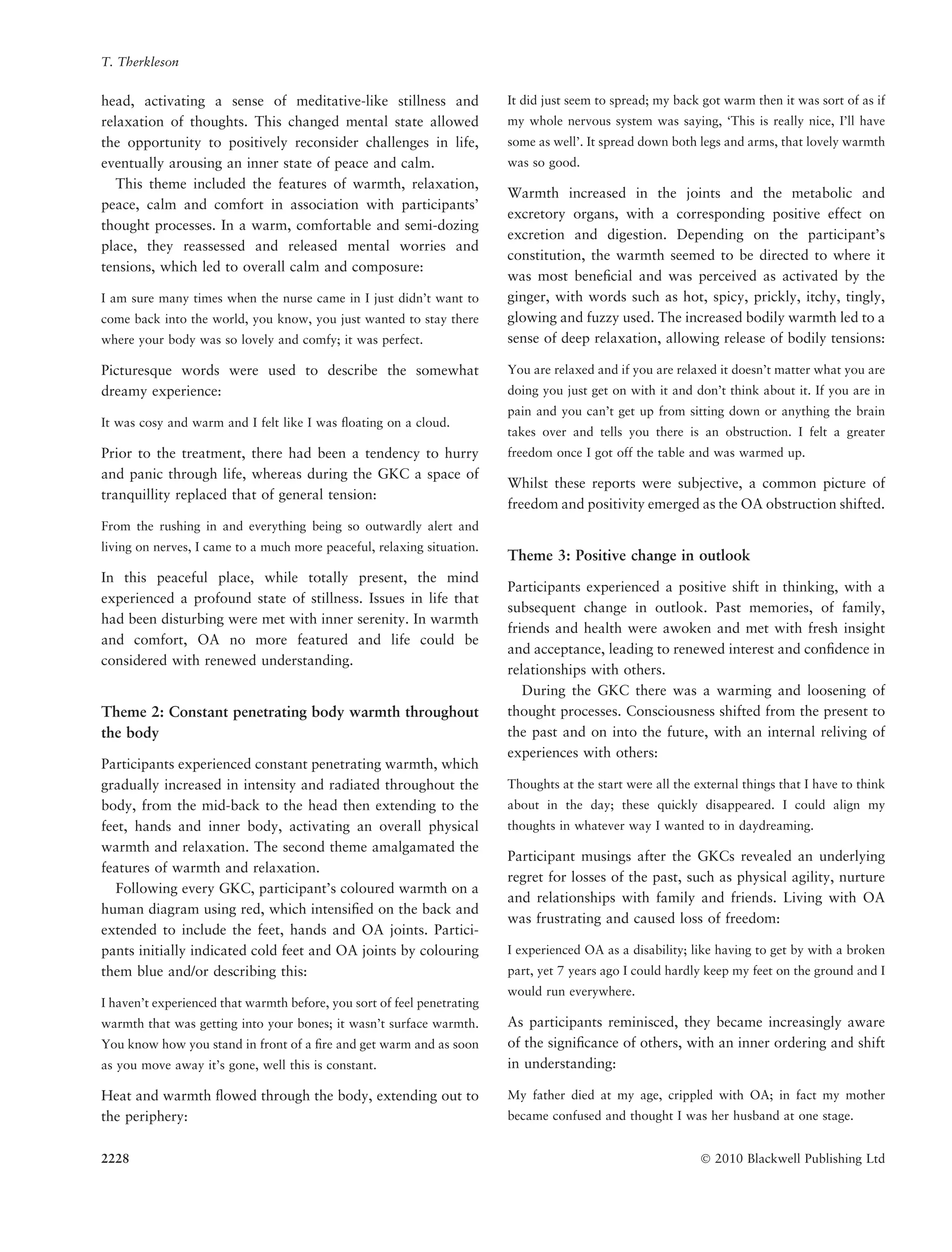
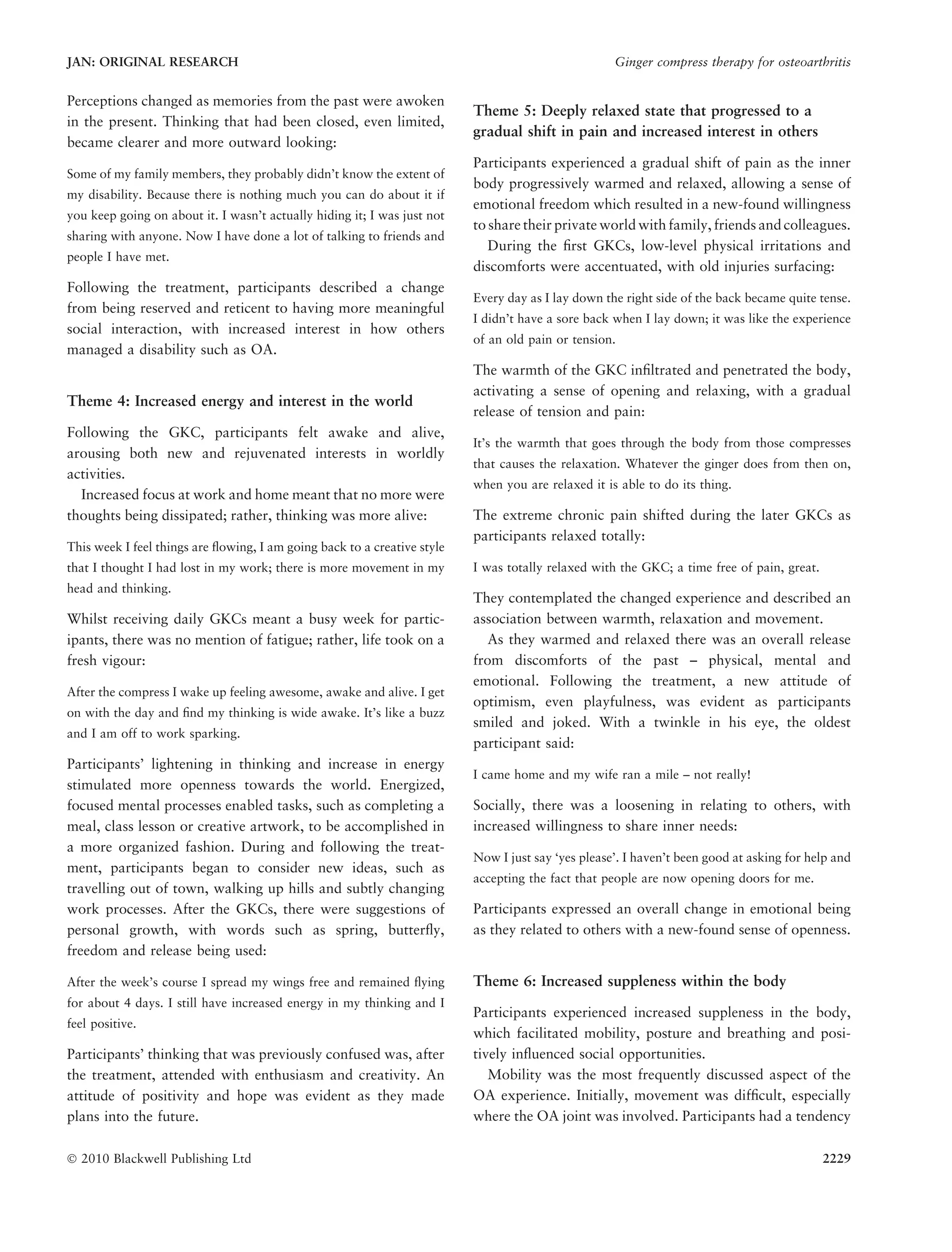

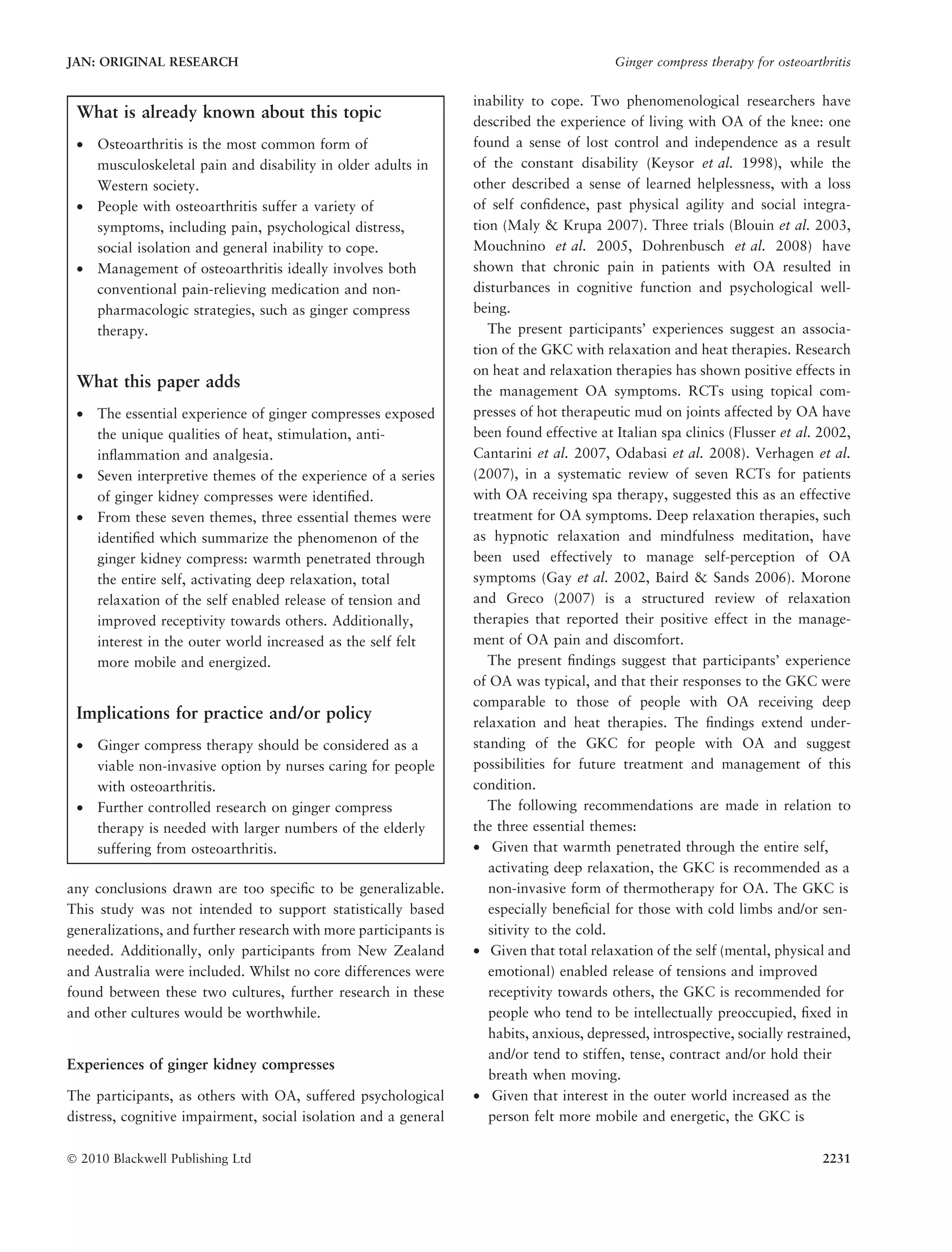
![suggested for those with OA, who are tired and lack the
stamina to be involved in outside activities.
Research involving well-designed controlled studies or
trials is warranted. Possibilities for future research on this
topic are vast as the GKC treatment is largely unexplored.
For example, it is possible that the chemical components of
ginger actively contribute to the warmth, relaxation,
stimulatory, anti-inflammatory and analgesic effect.
Research using transdermal delivery of ginger, in combi-
nation with heat packs, might improve management of
OA. Research exploring the impact of the GKC on
larger populations of older people with OA, especially
those with mental health issues, would be valuable.
Additionally, increased understanding of the characteristics
of older people with asymptomatic OA could help to
identify the characteristics and/or coping skills that
people develop to manage the damage to joints caused by
OA.
Conventional management of OA using anti-inflammatory
drugs and analgesics is often an unsatisfactory answer due to
side effects and/or patient compliance issues, whereas the
GKC treatment offers hope and a brighter future for those
living with OA. Healthcare providers should consider the
GKC as part of holistic treatment for people with OA
symptoms.
Acknowledgements
Appreciation is extended to: Anthroposophic Nurses and
Doctors in New Zealand, Australia, Europe and United
Kingdom for both practical and personal support through-
out this research. My academic colleagues in the phenom-
enology group at Edith Cowan University (ECU), Western
Australia, especially Dr Trish Sherwood, for her stimulat-
ing, challenging and supportive encouragement these past
years.
Funding
Grants for this PhD research were received from The
Australian government, through an Australian Post-graduate
Award; ECU, Western Australia, through a Post-graduate
Excellence Award; Mahle-Stiftung GmbH, Stuttgart,
Germany, through funding the ten nurses; and Phytomed
Medicinal Herbs Ltd, New Zealand, through donating the
organic ground ginger.
Conflict of interest
No conflict of interest has been declared by the author.
References
Altman R.D. & Marcussen K.C. (2001) Effects of a ginger extract on
knee pain in patients with osteoarthritis. Arthritis & Rheumatism
44(11), 2461–2462.
Baird C.L. & Sands L.P. (2006) Effect of guided imagery with
relaxation on health-related quality of life in older women with
osteoarthritis. Research in Nursing & Health 29(5), 442–451.
Bliddal H., Rosetzsky A., Schlichting P., Weidner M.S., Andersen
L.A., Ibfelt H.H., Christensen K., Jensen O.N. & Barslev J. (2000)
A randomized, placebo-controlled, cross-over study of ginger
extracts and ibuprofen in osteoarthritis. Osteoarthritis and Carti-
lage 8(1), 9–12.
Blouin J.S., Corbeil P. & Teasdale N. (2003) Postural stability is
altered by the stimulation of pain but not warm receptors in
humans. BMC Musculoskeletal Disorders 4, 23.
Cantarini L., Leo G., Giannitti C., Cevenini G., Barberini P. &
Fioravanti A. (2007) Therapeutic effect of spa therapy and short
wave therapy in knee osteoarthritis: a randomized, single blind,
controlled trial. Rheumatology International 27(6), 523–529.
Dohrenbusch R., Buchanan H., Lipka S. & Ott R. (2008) Impact of
chronic somatoform and osteoarthritis pain on conscious and
preconscious cognitive processing. Journal of Pain 9(10), 927–939.
Eichler E. (1981) Wickel und auflagen (cloths and compresses), 3rd
edn. Verein fur Anthroposophisches Heilwesen e.v., Bad Liebenz-
ell, Germany.
Felson D.T., Lawrence R.C., Dieppe P.A., Hirsch R., Helmick C.G.,
Jordan J.M., Kington R.S., Lane N.E., Nevitt M.C., Zhang Y.,
Sowers M., McAlindon T., Spector T.D., Poole A.R., Yanovski
S.Z., Ateshian G., Sharma L., Buckwalter J.A., Brandt K.D. &
Fries J.F. (2000a) Osteoarthritis: new insights. Part 1: the disease
and its risk factors. Annals of Internal Medicine 133(8), 635–646.
Felson D.T., Lawrence R.C., Hochberg M.C., McAlindon T., Dieppe
P.A., Minor M.A., Blair S.N., Berman B.M., Fries J.F., Weinberger
M., Lorig K.R., Jacobs J.J. & Goldberg V. (2000b) Osteoarthritis:
new insights. Part 2: treatment approaches. Annals of Internal
Medicine 133(9), 726–737.
Fendrick A. & Greenberg B. (2009) A review of the benefits and
risks of non-steroidal anti-inflammatory drugs in the management
of mild-to-moderate osteoarthritis. Osteopathic Medicine and
Primary Care 3(1), 110–117.
Fingado M. (2001) Therapeutische wickel und kompressen (thera-
peutic cloths and compresses). Natura Verlag, Dornach, Switzer-
land.
Flusser D., Abu-Shakra M., Friger M., Codish S. & Sukenik S. (2002)
Therapy with mud compresses for knee osteoarthritis: comparison
of natural mud preparations with mineral-depleted mud. Journal of
Clinical Rheumatology 8(4), 197–203.
Gay M.C., Philippot P. & Luminet O. (2002) Differential effective-
ness of psychological interventions for reducing osteoarthritis pain:
a comparison of Erikson [correction of Erickson] hypnosis and
Jacobson relaxation. European Journal of Pain 6(1), 1–16.
Giorgi A. (1971) A phenomenological approach to the problem of
meaning and serial learning. In Duquesne Studies in Phenomeno-
logical Psychology, Vol. 1 (Giorgi A., Fischer W. & von Eckarts-
berg R., eds), Duquesne University Press, Pittsburgh, pp. 88–100.
Giorgi A. (1985) Sketch of a psychological phenomenological
method. In Phenomenology and Psychological Research (Giorgi
A., ed.), Duquesne University Press, Pittsburgh, PA, USA, pp. 8–22.
Giorgi A. (1997) The theory, practice and evaluation of the phe-
nomenological method as a qualitative research procedure. Journal
of Phenomenological Psychology 28(2), 235–260.
T. Therkleson
2232 Ó 2010 Blackwell Publishing Ltd](https://image.slidesharecdn.com/j-140715140130-phpapp01/75/J-1365-2648-2010-05355-x-8-2048.jpg)
